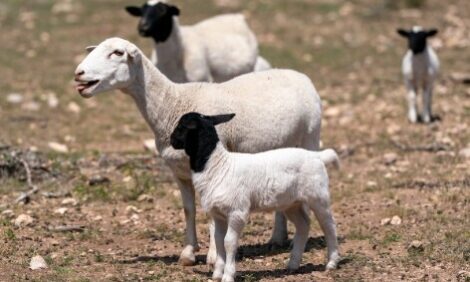



Add new tools to your fall calving kits
Make sure your fall calving kit has the latest innovations to easy the calving processIt’s fall calving season. You’ve got your fall calving kits assembled, right? Not yet? That’s okay. Today’s calving kits include proven tools, plus a couple of new ones that can help your herd have a healthy calving period.
Veterinarians recommend assembling pre- and post-calving kits, so all the tools you need will be in one place. A portable toolbox or a sturdy cardboard box will work.

“The first thing you need for both kits, if you don’t have one, is an established veterinary client-patient relationship (VCPR) with a veterinarian,” Dr. Scott Westlake, Solvet technical services veterinarian, says. “If the vet isn’t familiar with your herd, welcome them to the ranch so they can understand its current health and disease challenges. Also, make sure they know when calving happens so they can come help with a difficult calving. They have no way of knowing when you might need help if they’re not informed.”
Once this is done, it’s time to make the pre-calving kit. It should include the following.
- The veterinarian’s phone number (in your phone and in the kit)
- Strong flashlight and/or headlamp with backup batteries
- Long OB gloves
- A halter and/or rope to restrain the cow. Ropes should be tied low so she can lie down.
- Disinfectant or iodine solution to wash gloves and the cow’s vulva
- Bucket for water, towels, paper towels
- A calf supplement, such as Solvet Vitaferst-Care Oral Neonatal Supplement with Vitamins A, D, E and B12
- 7% iodine and scissors for the navel cord, plus dental floss to tie it off if it won’t quit bleeding
- Lubricant. Have A LOT.
- Calf puller and OB chains
- Ear tag applicator, working ear tags, tagging pens
- Colostrum replacer, milk replacer/tube
- Scales

Your post-calving kit will contain some of the same items as the pre-calving kit, but it’s important and necessary. Some tasks don’t get done at birth for any number of reasons. The post-calving kit should include these items.
- The veterinarian’s phone number (in your phone and in the kit)
- Coats or warming box, if it’s cold
- Colostrum: fresh, frozen or high-quality commercial product
- Nipple bottle to ensure the calf gets colostrum. Use an esophageal feeder, if needed. A calf should get four to six quarts of colostrum within six hours after birth.
- A calf supplement, such as Solvet Vitaferst-Care Oral Neonatal Supplement with Vitamins A, D, E and B12
- An assortment of syringes and needles in sizes the vet recommends for vaccines and other needs.
- Record book and pencil, phone or recording device
- Castration bander
- Lidoband™ lidocaine-impregnated elastrators
“Vitaferst-Care provides important nutrients after birth without an injection. A Lidoband band addresses the pain and discomfort associated with band castration and provides local anesthesia from the moment of placement,” Westlake says. “Lidoband contains 80 milligrams of lidocaine and skin permeation enhancers. This formulation helps local anesthesia get into scrotal tissues within two hours and lasts for 42 days. Lidoband is for use in bull calves weighing up to 250 pounds.”


